Progress Spacecraft
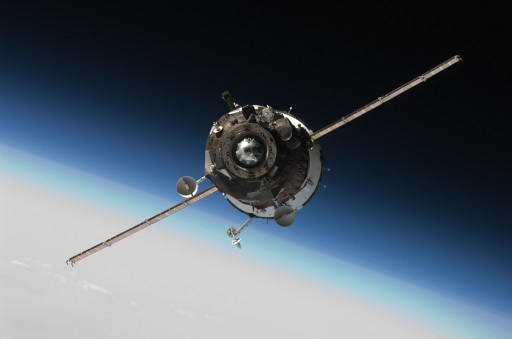
The Russian Progress is an unmanned cargo resupply spacecraft that is largely based on the manned Soyuz. It is used to resupply Space Stations and was used for the Russian Salyut and Mir Space Stations as well as the International Space Station that receives three or four Progress flights a year.
Progress is capable of carrying pressurized cargo in its pressurized cargo carrier and also deliver propellants, water and pressurized gases to the Space Station. The first progress flew in 1978 to the Russian Salyut 6 Space Station. Since then, Progress was upgraded multiple times, going through a number of generations with its most recent generation flying under the designation of Progress M-M.
Progress is launched on the Soyuz Rocket, currently on the Soyuz-U, but when this vehicle has been phased out, Soyuz 2 will be in charge of delivering the Progress to orbit. The Progress can dock to any docking port on the Russian Segment of the International Space Station.
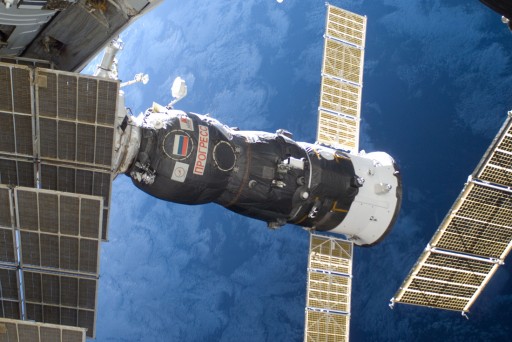
Once docked and secured in place, the hatch to the pressurized cargo carrier can be opened by the crew to unload the cargo. Because it is manned in orbit (crew members can enter the spacecraft), Progress is classified as a manned spacecraft, although it launches without a crew.
During its stay at the Space Station, all cargo is transferred to ISS. This includes dry cargo that is transferred by the crew, water that is also transferred internally, oxygen and nitrogen gas that is released to repressurize the station’s atmosphere, and propellant which is transferred via a dedicated transfer system being fed to tanks on the Russian Segment.
Afterwards, Progress is loaded with trash and no-longer-needed items before the hatch is closed and the spacecraft undocks. Progress does not have a heat shield and makes a targeted, destructive re-entry to end its mission.
Technical Details
| Type | Progress M |
| Manufacturer | RKK Energia |
| Length | 7.23m |
| Max Diameter | 2.72m |
| Cargo Module Diameter | 2.20m |
| Span | 10.6m |
| Launch Mass | 7,200kg |
| Crew | 0 |
| Cargo Volume | 6.6m³ |
Just like the Soyuz Spacecraft, the Progress consists of three sections, an Instrumentation and Propulsion Module, a Refueling Module (instead of the Entry Module of the manned Soyuz) and a pressurized Cargo Module containing the docking system and a propellant transfer system. Progress has a launch mass of up to 7,200 Kilograms. It is 7.23 meters long with a maximum diameter of 2.72 meters and a cargo module diameter of 2.2 meters.
Progress can carry up to 1,800kg of dry cargo, 420kg of water, 50kg of air or Oxygen and 850kg of propellants. For the trip home, Progress can be loaded with 1,000 to 1,600kg of trash and 400kg of liquid waste. Fully deployed in orbit, Progress has a span of 10.6 meters.
Progress is certified to stay in orbit for up to six months. In its regular flight schedule, a Progress undocks shortly before another one is launched to vacate the docking port. In the past, Progress vehicles have conducted a variety of secondary missions after their cargo resupply flight was complete, including scientific experiments and technical demonstrations in space. Unlike the Soyuz, Progress is not capable of separating its modules, because it is not designed to survive re-entry.
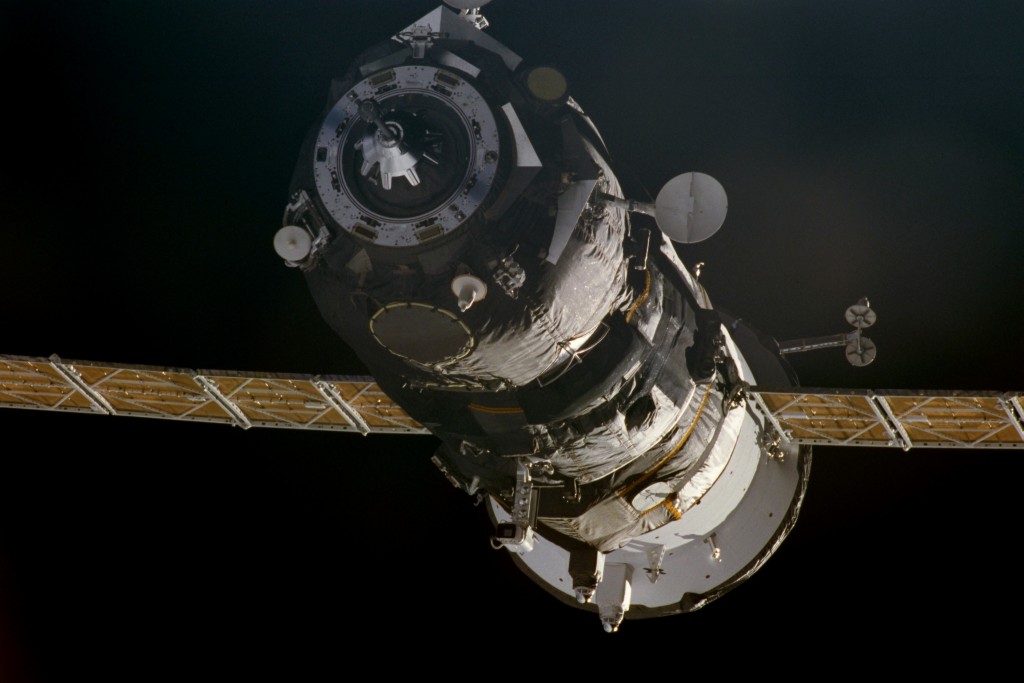
Cargo Module
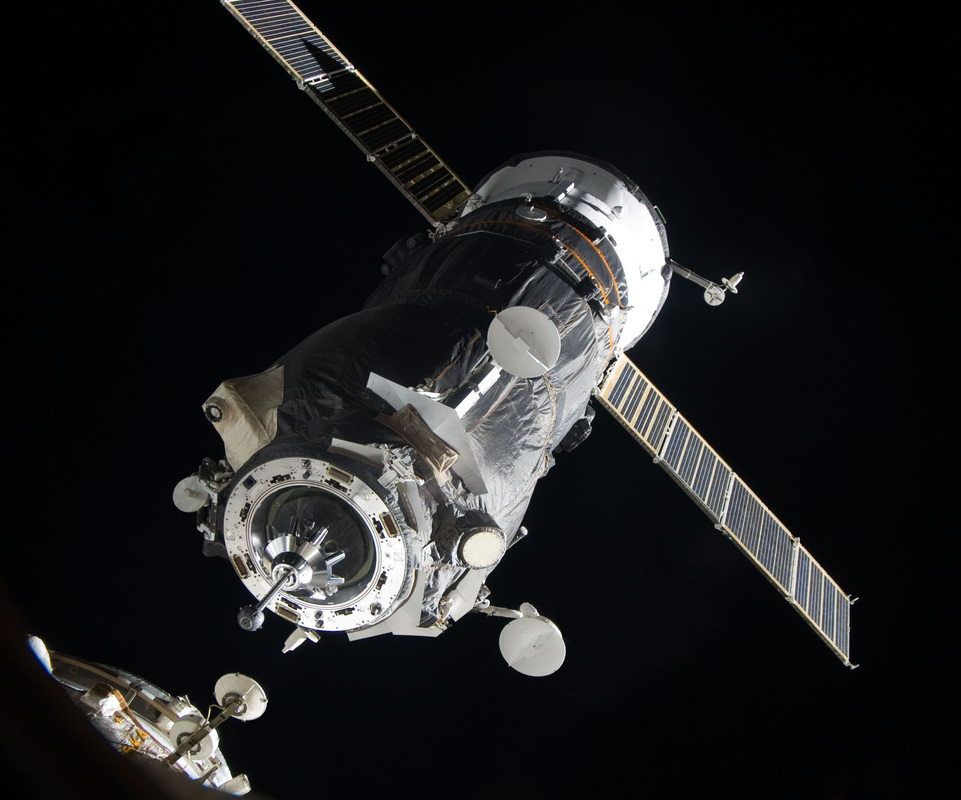
| Total Payload | 2,350kg |
| Maximum Dry Cargo | 1,800kg |
| Water | 420kg |
| Air/Oxygen | 50kg |
| Refueling Propellant | 880kg |
| Disposal Cargo | Up to 1,600 Kilograms |
| Liquid Waste Capability | 400kg |
Just like the Soyuz Spacecraft, the Progress consists of three sections, an Instrumentation and Propulsion Module, a Refueling Module (instead of the Entry Module of the manned Soyuz) and a pressurized Cargo Module containing the docking system and a propellant transfer system.
Progress has a launch mass of up to 7,200 Kilograms. It is 7.23 meters long with a maximum diameter of 2.72 meters and a cargo module diameter of 2.2 meters.
Progress can carry up to 1,800kg of dry cargo, 420kg of water, 50kg of air or Oxygen and 850kg of propellants. For the trip home, Progress can be loaded with 1,000 to 1,600kg of trash and 400kg of liquid waste. Fully deployed in orbit, Progress has a span of 10.6 meters.
Progress is certified to stay in orbit for up to six months. In its regular flight schedule, a Progress undocks shortly before another one is launched to vacate the docking port. In the past, Progress vehicles have conducted a variety of secondary missions after their cargo resupply flight was complete, including scientific experiments and technical demonstrations in space. Unlike the Soyuz, Progress is not capable of separating its modules, because it is not designed to survive re-entry.
Refueling Module
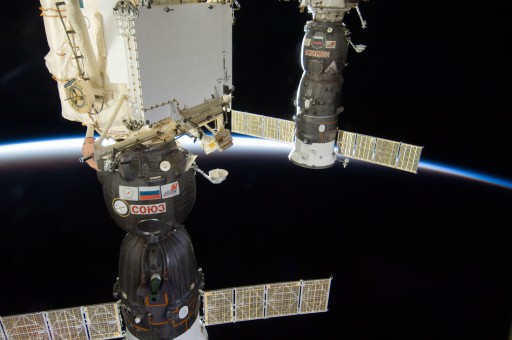
In place of the Descent Module of the Soyuz, the Progress features a Refueling Module that holds four propellant tanks that are filled with Unsymmetrical Dimethylhydrazine fuel and Nitrogen Tetroxide oxidizer for transfer to the Space Station.
In addition, the module has two water tanks that can carry up to 420kg of Water to the Space Station and 400kg of liquid waste (waste water and urine) back on its trip to destructive re-entry. Also, the Refueling Module is equipped with spherical gas tanks that can carry up to 50 Kilograms of compressed Oxygen, Nitrogen or air to the space station.
The propellants are transferred via connectors to the docking interface from where they are directed through a propellant adapter to enter the station’s propellant system. These transfer lines are flushed after transfers to avoid contamination. The transfer lines do not pass through the crew compartments of either, Progress or ISS, to make sure the crew can not come into contact with the toxic propellants.
The gas tanks are also located on the outside of the crew module so that any leaks will not release gas into the station and cause an Oxygen rich environment.
Instrumentation and Propulsion Module
| Diameter | 2.72m |
| Launch Mass | ~2,900kg |
| Habitable Volume | 0m³ |
| Main Propulsion System | KTDU-80 |
| Main Engine | S5.80 |
| Trust | 2,950N |
| Attitude Control | 28 DPO Thrusters |
| Thrust | 26.5N/130N |
| Oxidizer | Nitrogen Tetroxide |
| Fuel | Unsymmetrical Dimethylhydrazine |
| Propellant Mass | 880kg |
| Power Generation | 2 Solar Arrays |
| Span | 10.6m |
| Area | 10m² |
| Power | 1000W |
| Flight Computer | TsVM-101 |
This module is similar in construction to that of the Soyuz, but it features a slightly different configuration of its subsystems. It carries the propulsion system, electrical power system and sensor packages as well as flight computers. A pressurized container includes systems for thermal control, electric power supply, communications, telemetry and navigation. The unpressurized portion of the Instrumentation Module contains the Main Engine and the liquid-fueled propulsion system.
The propulsion system is used for attitude control maneuvers, Rendezvous and Orbit Adjustments as well as the deorbit burn. The Progress-M spacecraft is outfitted with an KTDU-80 propulsion module featuring the main propulsion system. It includes four spherical tanks that can hold up to 880 Kilograms of UMDH and N2O4 propellants. The S5.80 main engine can operate at three thrust levels. Nominal thrust is 2,950 Newtons. KTDU-80 weighs 310 Kilograms and provides a specific impulse from 326-286s. The engine operates at a chamber pressure of 8.8 bar, has an area ratio of 153:1 and a thrust-to-weight ratio of 2.03. KTDU is 1.2m long and 2.1m in diameter.
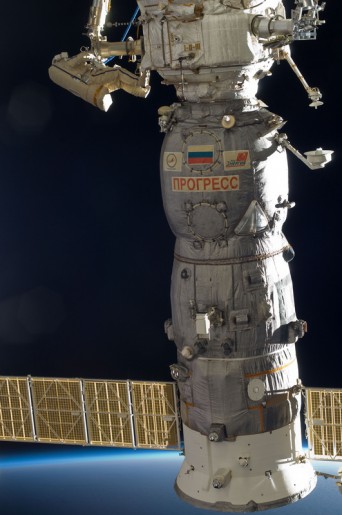
In addition to its main propulsion system, Progress features 28 multidirectional attitude control thrusters, each with a thrust of 130 Newtons. KTDU has four propellant tanks and four pressurization tanks that hold gaseous Helium for propellant tank pressurization. Propellant that is not needed to rendezvous and dock with ISS and for the return trip can be used for ISS reboosts.
Surplus propellant amounts can vary from 185 to 250 Kilograms. For reboosts, Progress uses four or eight of its attitude control thrusters pointing to the correct direction. The main propulsion system is generally not used for reboosts as it puts stress on the docking interface between the Space Station and the Progress.
The Instrumentation Module also carries the electrical power system that consists of two solar arrays that deploy once the vehicle is on orbit. With its solar arrays deployed, the Progress has a 10.6-meter span. The power system also includes onboard batteries.
The instrumentation module is outfitted with the main flight computer that is in charge of all aspects of the Progress mission. In a recent upgrade, the Progress was reconfigured for the TsVM-101 digital flight computer and MBITS digital telemetry system. The new computer is more than 60kg lighter than the old Argon-16 computer. The digital system allows Progress to carry 75 Kilograms of additional cargo.
All avionics of the Progress are located in a pressurized instrument module that is twice as long as that of the Soyuz as avionics normally located in the Soyuz Entry Module had to be relocated to this section.
Progress Flight Profile
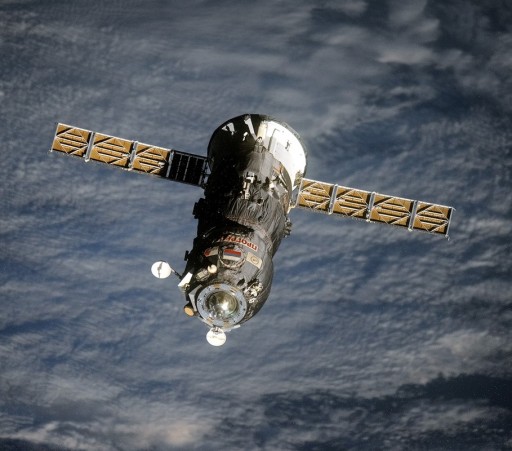
Progress Spacecraft are launched atop a Soyuz-U (Soyuz 2 starting in 2014) rocket that delivers the vehicle to orbit in under nine minutes. After separating from the booster, the Progress deploys its solar arrays and communication antennas to complete is orbital insertion process. From there, Progress sticks to a nominal 34-orbit rendezvous profile to link up with the International Space Station. A fast Rendezvous profile that takes Progress to ISS in just four orbits is also available, but requires certain orbital dynamics and precise injection by the launch vehicle.
During its link-up with the Space Station, Progress performs a number of orbit adjustments to increase its altitude and chase the space station. Over the course of its rendezvous, the Progress makes a number of phasing burns to set the stage for its automated rendezvous. This sequence is initiated while Progress is still at a large distance to ISS. Progress uses the KURS Rendezvous System that communicates with its counterpart, KURS-A, on the Space Station to provide navigation data to the vehicle’s computers while the spacecraft approaches. During the approach, the Progress makes a number of breaking maneuvers and course corrections.
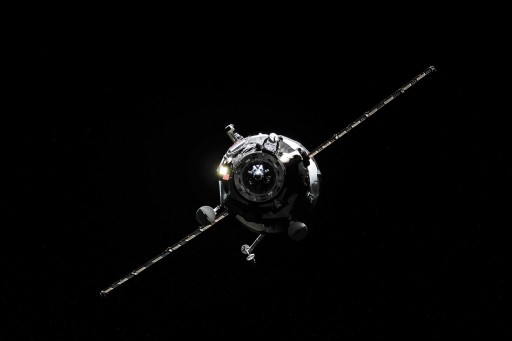
Once inside 400 meters, the crew aboard the Space Station can remotely control the Progress vehicle via the TORU system that allows crew members to bring the Progress in for a manual docking should its automatic systems fail.
When the Progress gets close to ISS, it begins a flyaround to align itself with its docking port. Once aligned, the Progress stops its approach at a distance of 200 meters to complete a short period of stationkeeping during which the team on orbit and inside mission control check alignment and the vehicle’s systems. Once everything is verified, the Progress resumes its approach and gently fires its thrusters to dock at velocity of 0.1 meters per second. After soft docking, hooks are closed to form a hard mate before a standard one-hour leak check is initiated. Afterwards, the crew can open the hatch of the spacecraft to begin cargo operations.
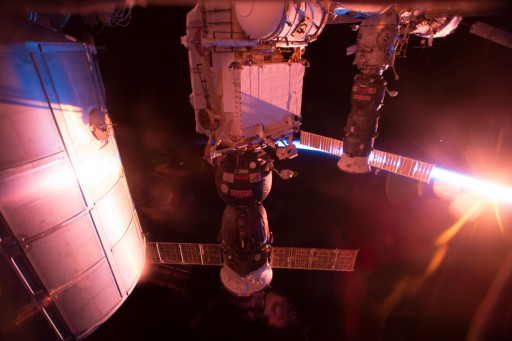
While the Progress is docked, the crew removes delivered items from the cargo module and transfers items to the station. Propellants are transferred by ground controlled commands and water is transferred manually by the crew using a command panel in the cargo module. Pressurized gases are released directly into the interior of the cargo module and with that the ISS. After being loaded with trash and liquid waste, the hatch to the vehicle is closed and the Progress undocks from the station.
After undocking, the Progress can either support a secondary mission for several weeks or get ready for a faster end of its mission. When its mission in orbit is complete, Progress will fire its engines to perform a deorbit burn for destructive re-entry over the Pacific Ocean with surviving parts impacting far away from any land masses.
